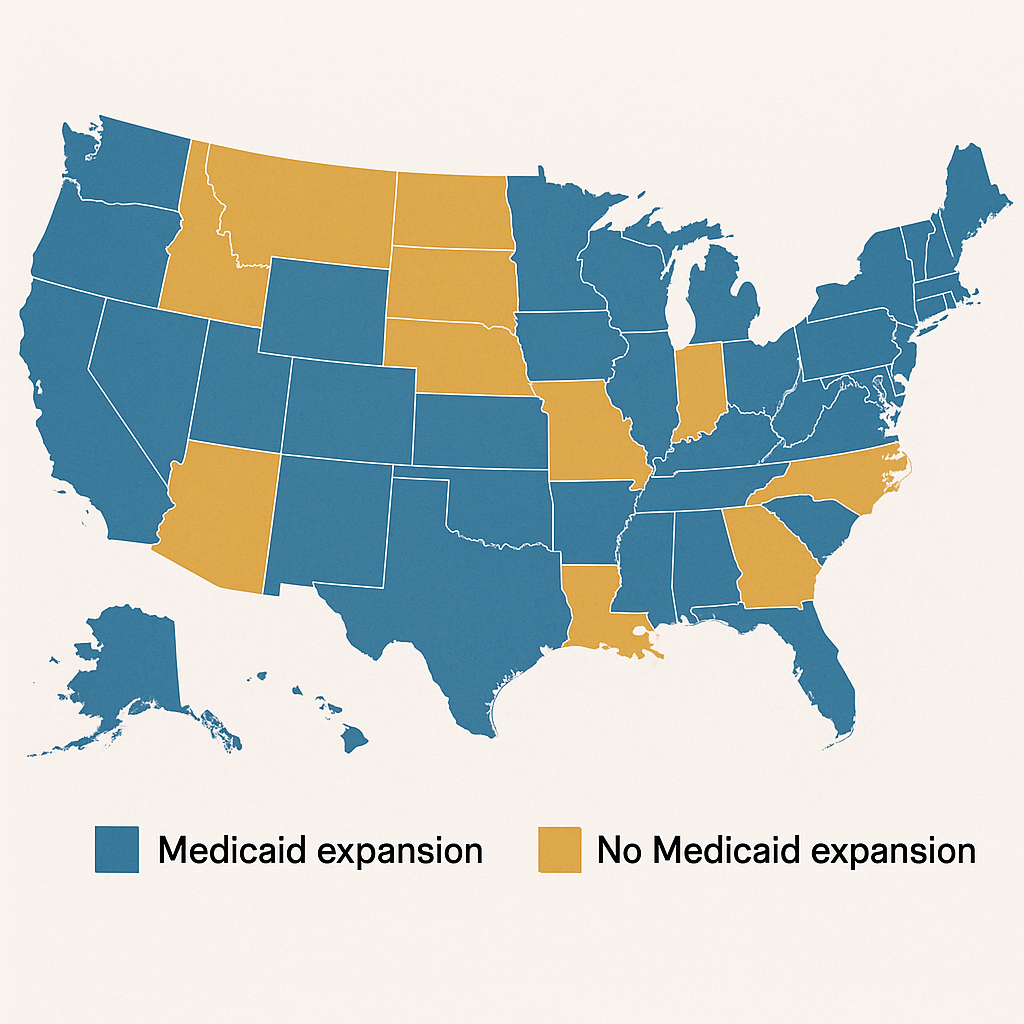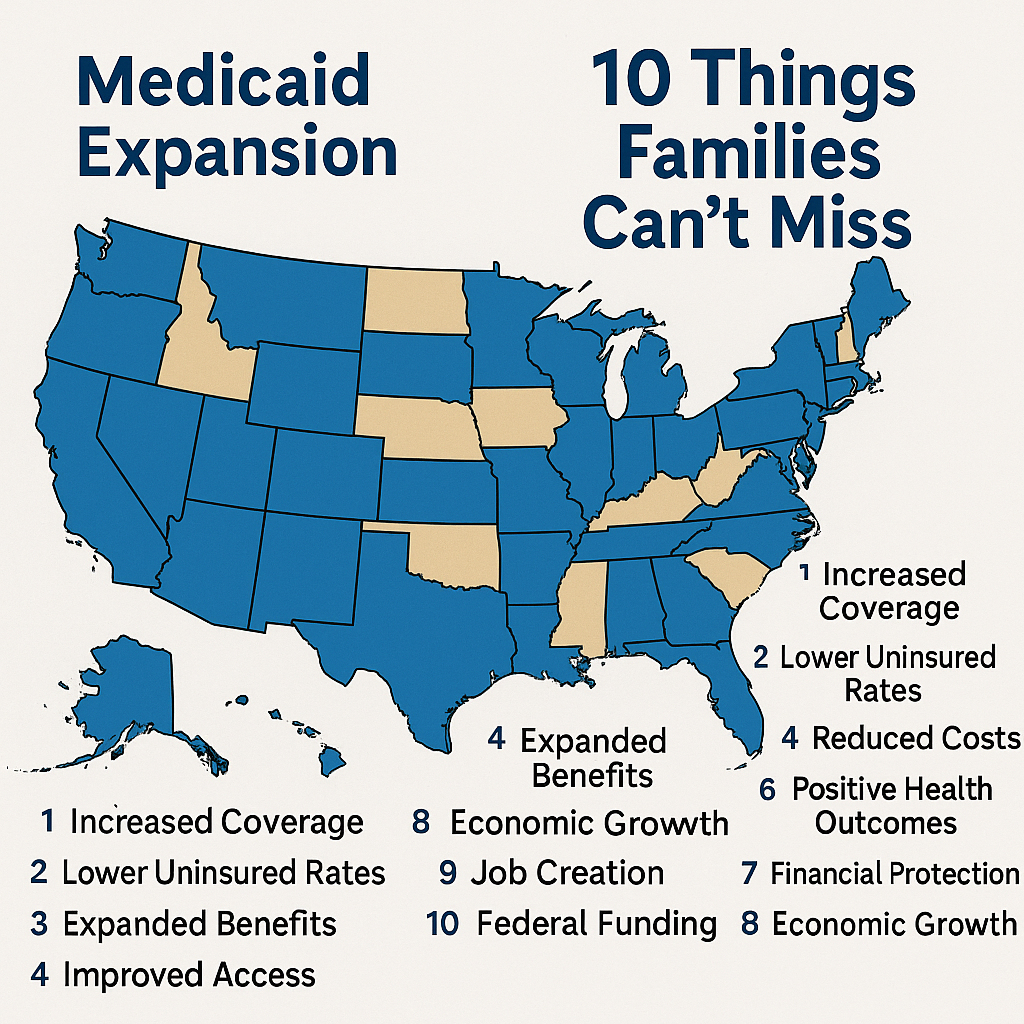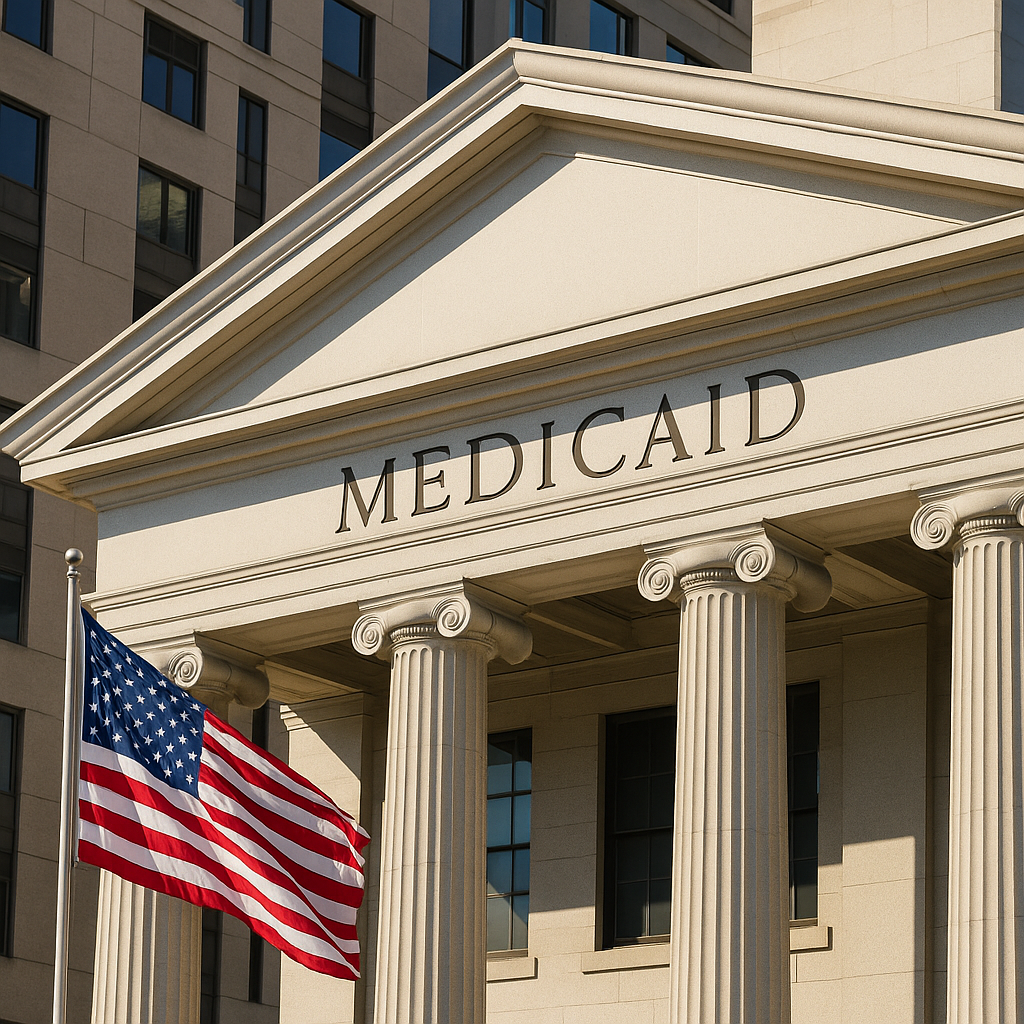Medicaid Expansion Across the United States : Medicaid expansion changed who can get affordable health coverage in the U.S. — but adoption varies by state, the rules aren’t identical everywhere, and recent policy changes make it more important than ever to check the facts for your state. This guide walks you through what expansion means, who’s eligible, how to enroll, what services are covered, and practical next steps you can take today (with only official sources so you can click and verify).

TL;DR — The headline facts you need now
- Most states have adopted Medicaid expansion, but a handful still haven’t — check your state. (KFF)
- Expansion generally covers adults with incomes up to 138% of the federal poverty level (FPL) (about $21,597 for an individual in 2025), though states set some details. (KFF)
- You can apply for Medicaid either through your state Medicaid agency or via HealthCare.gov (Marketplace), depending on your state. (HealthCare.gov)
- About 78 million people were enrolled in Medicaid & CHIP in early 2025 — expansion drove much of the growth. (Medicaid)
- For a verified, state-by-state snapshot and how to apply in your state, use the official state profiles on Medicaid.gov. (Medicaid)

1) What is Medicaid expansion
When the Affordable Care Act (ACA) introduced Medicaid expansion, the idea was simple: extend Medicaid to most adults with incomes up to 138% of the Federal Poverty Level so low-income adults who weren’t previously eligible could get coverage. After a Supreme Court decision, expansion became optional for states — so some adopted it and others did not. The result: eligibility (and who’s covered) depends on which state you live in. (KFF)
2) Who is covered under expansion (typical rules)
- Adults (non-disabled, non-elderly) with incomes at or below about 138% FPL are the primary group expansion targets. That equals roughly $21,597 for one person in 2025; thresholds scale up for larger household sizes. (KFF)
- States may add extra groups (pregnant people, parents, youth aging out of foster care) and sometimes apply different income tests for them. Always check your state profile. (Medicaid)
3) Which states have expanded — and where to check right now
By mid-2025, most states (about 41 states + DC) had implemented expansion; roughly ten states had not. That number moves slowly as legislatures or voters act, so verify your state’s current status before you assume anything. The Kaiser Family Foundation and Medicaid.gov maintain up-to-date maps and trackers you can click to confirm. (KFF, Medicaid)
How to check right now (clickable & official):
- Medicaid state profiles and links to each state agency: https://www.medicaid.gov/state-overviews/state-profiles. (Medicaid)
4) How expansion changed coverage numbers (why it matters)
Expansion materially increased Medicaid enrollment and reduced the uninsured rate among low-income adults. In early 2025, about 78 million people were enrolled in Medicaid and CHIP across reporting states — a big part of that growth came from adults newly eligible under expansion. This matters because bigger enrollment improves access to primary care, preventive services, and financial protection for families. (Medicaid)
5) What services are included under Medicaid (what you get)
Medicaid (including expansion) covers a broad set of services required by federal law, and many states add extras. Typical coverage includes:
- Doctor visits and primary care
- Hospital care and emergency services
- Prescription drugs
- Preventive care and vaccinations
- Mental health and substance use disorder services
- Long-term services in nursing homes (varies by state)
Always read your state’s “benefit package” or Summary of Benefits to know copays, prior authorization rules, and provider networks. For state-specific benefit details, use the Medicaid.gov state profile for your state. (Medicaid)
6) Step-by-step: How to see if you qualify (quick checklist)
- Find your state on Medicaid.gov’s state profiles page and click through to the state agency website. (That page lists eligibility rules, local offices, and phone numbers.) (Medicaid)
- Compare your household income to the expansion threshold (138% FPL) and other program limits for your household size — calculators are available on state sites and HealthCare.gov. (KFF, HealthCare.gov)
- Gather documents: proof of identity, Social Security numbers (if available), income proof (pay stubs or tax returns), and proof of residency.
- Choose how to apply (state portal vs. HealthCare.gov). If your state uses the federal Marketplace for eligibility determinations, you can start at HealthCare.gov; otherwise, apply directly through your state Medicaid office. (HealthCare.gov, Medicaid)
7) How to apply — official, clickable resources
- Apply through HealthCare.gov (if your state uses the Marketplace): https://www.healthcare.gov/medicaid-chip/ — This page shows when to apply and how the Marketplace and Medicaid work together. (HealthCare.gov)
- State Medicaid agency portal & contact list: https://www.medicaid.gov/state-overviews/state-profiles — click your state for direct application links and phone numbers. (Medicaid)
If you prefer phone or in-person help, the state profile pages list local offices. Many community health centers and navigators also offer free enrollment assistance.
8) Special cases & things people often ask
- What if my state hasn’t expanded? In those states there’s an “insurance gap”: some low-income adults earn too much to qualify for traditional Medicaid but too little to qualify for Marketplace subsidies. Check state-specific programs — a few non-expansion states still run state-funded coverage or limited programs. KFF tracks these differences if you need a quick comparison. (KFF)
- Pregnant people & children: Pregnant people and children often qualify for Medicaid at higher income thresholds even in non-expansion states — check your state profile. (Medicaid)
- Immigration status: Eligibility varies; some states provide coverage to certain immigrant children or pregnant people using state funds. State pages and Medicaid.gov detail rules. (Medicaid)
9) Managing your coverage after enrollment (practical tips)
- Report changes quickly. Income, household size, or address changes can affect eligibility. Many states require updates within 10–30 days. (Medicaid)
- Keep provider lists handy. Before you need care, use your state’s provider directory so you know in-network doctors and clinics. (Medicaid)
- Annual renewal. Watch for renewal notices — failing to complete renewal can cause a coverage gap. Several states have modernized renewal but you still must respond to requests for verification. (Medicaid)
10) If you’re uninsured now — immediate next steps
- Check your state profile (Medicaid.gov) and HealthCare.gov in case you’re eligible for Medicaid or Marketplace subsidies. (Medicaid, HealthCare.gov)
- Call your local health department or community clinic — many clinics help enroll people in coverage for free.
- If you’re in a non-expansion state, explore state programs, community clinics, and sliding-scale services while pushing for longer-term policy change.

State Snapshot (how to drill down fast)
Rather than listing every state here (status can change), use these two official resources to get an instant, accurate state snapshot:
- Medicaid state profiles (official state links): https://www.medicaid.gov/state-overviews/state-profiles. (Medicaid)
- KFF’s interactive tracker (status, recent actions, and context): https://www.kff.org/status-of-state-medicaid-expansion-decisions/ — great for quick charts and maps. (KFF)
Quick FAQ
Q — How much income is “138% FPL” in 2025?
A — For a single adult, roughly $21,597 in 2025; amounts scale with household size. Always verify exact numbers for your household size with state calculators. (KFF)
Q — Can I switch from Marketplace to Medicaid mid-year?
A — Yes. If your income falls and you qualify for Medicaid, you can switch; the application channels are explained on HealthCare.gov. (HealthCare.gov)
Q — Where can I find enrollment numbers for my state?
A — Medicaid.gov publishes monthly enrollment snapshots and state data tables (updated regularly). (Medicaid)
Final checklist — apply today (copy & use)
- Click your state on Medicaid.gov’s state profiles: https://www.medicaid.gov/state-overviews/state-profiles. (Medicaid)
- Compare your income to the 138% FPL guideline (use KFF or state calculators). (KFF)
- Gather ID, proof of income, proof of residency, and SSN (if you have one).
- Apply online through your state portal or HealthCare.gov (if your state uses the Marketplace). (HealthCare.gov, Medicaid)
- Save contact info for your state Medicaid office and set a calendar reminder for renewal.
Sources & where to verify (official pages)
- Status of state action on Medicaid expansion — KFF (state tracker). (KFF)
- Medicaid state overviews & links to your state agency (official federal page). (Medicaid)
- Medicaid & CHIP information on HealthCare.gov (how to apply & options). (HealthCare.gov)
- Facts about the expansion population and 138% FPL context (KFF analysis). (KFF)
- Medicaid & CHIP enrollment data (monthly reports, 2025). (Medicaid)
Disclaimer: This post is informational only and not legal or medical advice. Rules and income thresholds change; check the official state and federal pages linked above for the most current, state-specific details before you apply. All images used in this article are royalty‑free or licensed for commercial use and are provided here for illustrative purposes.